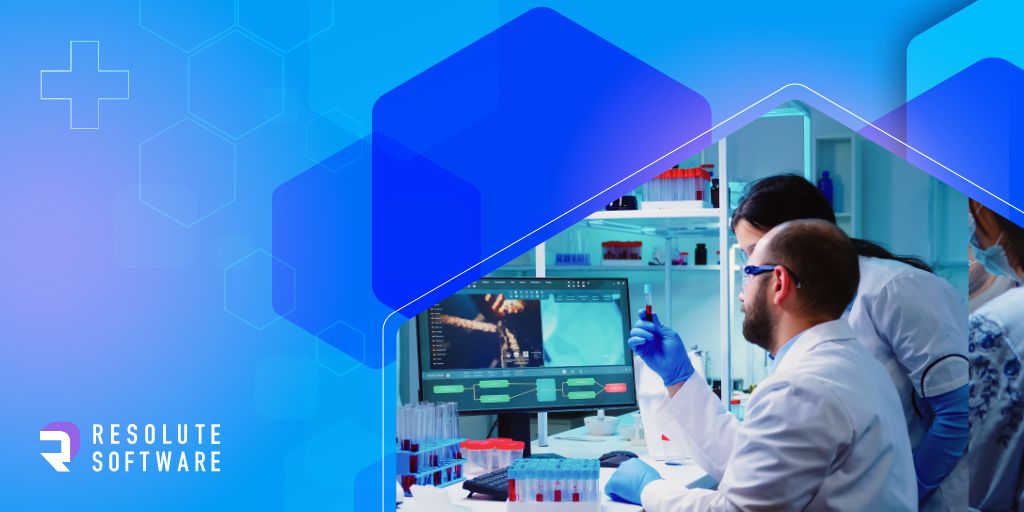
Technology has been raising patient expectations about self-services, personalisation, and quality on one side, and improving workforce productivity and efficiency on the other. Fast-tracked by the pandemic, the shift to digital has increased clinical willingness to adopt new ways of working. Software solutions today facilitate collaborations, expediting the diagnostic process and helping alleviate the burden from the NHS and the wider health and care systems.1
At the moment, the NHS is facing a large backlog of non-COVID-19 care, storing up greater problems for the future. As the pandemic continues to rage, this backlog of care will take even longer to work through as it continues to accumulate. The overall median waiting time for treatment increased in August 2021, to 11.5 weeks, as did the total number of patients waiting over 18 weeks for treatment, more than 1.85 million.2
The good news is that the UK government has announced new funding aimed at the digitisation of diagnostics to reduce the burden on the national health system, as well as turnaround times. The 2022 £248m funding boost will support investments in technology with an emphasis on diagnostic procedures, accelerating the diagnosis of health conditions, delivering earlier treatment, and reducing waiting lists.3
To support the NHS in their effort to minimize the backlog, software vendors need to focus on building products that drive workforce productivity and efficiency and facilitate collaboration across departments.
Why design in healthcare diagnostic applications matters
While health workers are among the most trained professionals, factors such as fatigue, fluctuations in attention span, and cognitive abilities influence their performance and have an important impact on the quality of healthcare services.4
Arriving at a diagnosis is a multifaceted process that frequently involves the collaboration of a number of different professionals. Diagnostic systems and applications play a major part in this process. These systems are used to record, store, and exchange crucial patient information that influences the diagnostic process. They provide essential patient health history data and are used when conducting physical exams as well as when analysing test results. Finally, they also impact a clinician’s workflow and post-diagnosis decisions.
A well-designed tool can significantly impact the diagnostic process and can either improve or impede the clinicians’ performance and success.
Wondering what a well-designed application looks like? Here are six important aspects that support the diagnostic process and improve its performance.
Six Important design aspects of diagnostic applications
1. Cross-platform and cross-device interoperability
Interoperability is an essential feature of any healthcare system. It guarantees that professionals at different points of the diagnostic and treatment process can access the data in a safe and reliable manner.
2. Easy access to data at the point of care
Both native and imported data must be retrievable in a reliable way to ensure that the diagnostic process is not slowed down, to reduce the probability of errors occurring, and to aid decision making.
3. Improved collaboration
An emphasis on collaboration should be placed to enable information exchange and feedback between clinicians. Improved collaboration aids the diagnostic process and reduces clinician stress.
4. Support for different use cases
Both UX and UI must support a variety of use cases. This includes creating a responsive UI that enables the use of different devices and accommodating different user workflows, since users’ competencies may vary. Enabling dark and light modes, as well as providing screen splitting or different ways of displaying information are further ways in which supporting different users can be achieved. Support for different use cases means that different levels of expertise or technical proficiency, and also different roles in the diagnostic process are more easily included.
5. Easy interaction
Healthcare systems must offer users easy and frictionless interaction. Elements include an easy login experience, unified dialog boxes, and alerts that do not disturb a clinician’s focus, simple, intuitive data displays, easy navigation, etc.
6. Automation and enhancements
Non-automated tasks can add up over a day’s work. These can include interacting with excessive dialogue boxes, unnecessary scrolling and navigating through the interface, approving non-essential steps in the diagnostic process, etc.
It is based on our experience working with major healthcare providers.
About Resolute Software
Resolute Software is the trusted partner for digital modernization of global healthcare organizations among which Fortune 100 companies.
Our latest experience includes the modernization of a healthcare app for a global manufacturer of diagnostic imaging and radiopharmaceutical products.
We have also created a healthcare mobile app for a global health organization that we launched within 10 weeks and had 500,000 downloads within its first weeks. It provides critical health information in 6 languages and in 30 regions around the world.
Sources:











